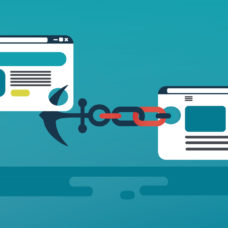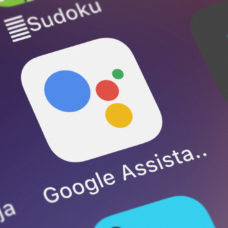What elements go into high-performing content?
Even the most researched, well-written, and useful article can sometimes fall flat on its face without a promotion strategy to support it. Content doesn’t attract traffic and get shared by chance. You can bet your bottom dollar that the most popular articles out there attracted attention as a result of a calculated promotion strategy.
This is why you should be taking a scientific approach to content creation. Your process should be well-defined and take SEO into account every step of the way.
In this article, we break down six key characteristics that high-performing content shares. By the end, you will be able to apply these lessons to improve your content creation process and achieve your performance goals.
Characteristics of High-Performing Content
1. High-performing Content Needs a Captivating Headline

For content creators, there’s nothing more frustrating than having well-researched articles go ignored and un-shared. The failure of otherwise solid articles often comes down to nothing more than an uninteresting title.
Headlines are like first impressions; compelling and hard to change. Headlines are the first thing your audience will read. This means it sets the tone for the reader’s experience of your content.
More importantly, in terms of traffic, the title or headline of your article could make or break its performance. That 70-character-long line could go ignored or even turn them off.
On the flipside, it’s straightforward to create compelling headlines that will boost your user engagement and web traffic. You just need to familiarize yourself with some useful techniques, and you’ll be writing catchy, powerful headlines in no time.
For a more in-depth how-to on how to write the perfect headline, you can check out our article here.
It explains why you should keep titles short and sweet, and how you can make them catchy. It also shows you how to do your content justice by avoiding sensationalism while still grabbing your reader’s attention.
2. Use Well Researched Intent-based Keywords

The perfect keyword is relevant and has a good search volume. This is the basis of keyword research. However, if you want your content to perform exceptionally well, you need to figure out the search intent of your target audience.
In other words, you need to dig a little deeper and ask yourself what answers your readers want to find.
Once you figure this out, you need to make sure your content answers your viewer’s search intent. This means including relevant search terms in your copy, along with useful explanations and related information. This means that your viewers will be satisfied when they are directed to your content, and search engines can easily match your articles with your target audience.
Therefore, to funnel relevant traffic to your content, you need to understand how your audience is searching and what keywords they are using.
Read More: How to Generate Content Ideas Your Audience Will Love
To understand your target audience’s search intent, you should familiarize yourself with these four types of search intent;
1. Navigational
Navigational intent is when searchers are looking for a specific website. These users want to familiarize themselves with the site, browse, or find out further information. They may not want to purchase anything from this company at this time. However, this intent is still essential for forging out your brand and could secure future conversions.
For example, a searcher may visit an online clothing retailer to find out if their products are ethical or fairtrade. They may not buy anything, but they are definitely interested and may return to purchase something in the future.
2. Informational
This one is pretty self-explanatory. Searchers with an informational intent, want information and answers. They will usually type questions into search engines and are often looking for solutions to problems. These users are on the fence. They are not necessarily buyers but have the potential to be. By providing them with information on your blog, you can also demonstrate how your product or service can solve their problem.
For example, someone who wants to find out how to dye their hair at home could come across your how-to guide that explains how to do this. At the same time, your how-to guide can explain why your product is the best option for them to use.
3. Investigational
Searches with investigational intent are looking for information because they want to make a transaction. They are looking to figure out what is the best option for them to buy and want all the relevant information they can get before they decide. This intent is satisfied by ‘about’ pages, reviews of products and services, detailed descriptions, and compare pages.
For example, if someone wants to buy a new car, they are likely to shop around looking for the best deals. They are also likely to compare different makes and models.
Make sure your site provides the best answer to all of their questions and the easiest way for them to purchase a product. Ease-of-use and convenience is half the battle in today’s e-commerce world.
4. Transactional
Transactional intent searchers know what they want and are ready to buy it. They will typically type long-tail and specific keywords.
For example, someone wants to buy a specific pair of shoes. They will type in a keyword like “black running shoes size 8”. Then, they will find the best price or delivery time and purchase the shoes.
You can quickly figure out which search intent you want to answer by simply referring back to your goals. For instance, if you’re going to grow your mailing list, you cater for informational search intent users who want to find a useful source of information that they can trust and return to. In this case, it’s a good idea to target keywords that are in the form of questions or use the prefix ‘how to.’
3. Always Add Relevant Visuals
Being faced with a wall of words can be very off-putting and, let’s be honest, pretty boring.
Readers can be put off reading even the most exciting information if it’s not presented in a visually pleasing way.
According to BuzzSumo, articles with images inserted every 75-100 words were shared twice as much as those without visuals. This is because they make content more digestible and offer additional keyword opportunities.
Using visuals is not only an excellent SEO move, but it will make your articles much more inviting.

You should use images throughout the body of your text to support and illustrate the points you’re trying to convey. Also, your pictures don’t just have to be photographs. You should vary your visual media by using;
- Informative graphs
- Humorous memes/ gifs
- Screenshots
- An original collage or illustration if suitable.
Don’t underestimate the power of images. By using them, it’s more likely that your readers will get to the end of your article and come back looking for more.
4. Successful Content is Readable
This one sounds simple. But, all too often, I come across articles that are impossible to read online. I don’t know whether bloggers get stage fright or are trying to be something they’re not. Often, readability gets sacrificed in an attempt to sound like an expert.
This is a major mistake. As a blogger, you need to keep in mind that your readers are casual scrollers looking for digestible information fast. If they wanted to read a lofty academic paper, they would go and look for one.
Don’t over complicate things. Instead, keep them clear, concise, and straightforward. This will make it much easier for you to share your knowledge with your audience. Don’t be afraid to be light-hearted instead of formal. Lastly, be yourself and let your personality shine through. When you work online, it’s easy to forget that there are actual humans behind the screen.
Always ask yourself: would you read your own article? Then, more importantly, ask yourself: would you enjoy reading it?
Readable articles are the ones that perform well. They drive traffic, get shares, and will help you establish a loyal audience.
5. High-Performing Content is Shareable

Shares are a measurable way of determining how well a blog post is performing. Additionally, getting shares means getting your name out there, expanding your reach, and, ultimately, building links.
For this reason, it is imperative that you make your content as easy to share as possible.
Read More: 5 Less Salesy Ways to Promote your Products on Social Media
These days, very few readers are going to take the time to copy and paste links onto social media platforms. You need to make sharing effortless by using a sharing plug-in.
Our best advice for using a sharing button is to make sure you are making it possible to share content on the most relevant platforms.
To do this, you need to know your niche audience inside out. If they’re business heads, maybe they use LinkedIn the most.
If you want to target a younger generation, you should try Instagram. Figure out where your content gets shared the most and make it quick and easy for your audience to keep sharing.
Another top tip is to avoid just inserting sharing buttons at the beginning or end of an article. Instead, have them throughout. You don’t know what paragraph is going to speak to your reader and make them want to share. You don’t even know if certain readers will get to the end. So make sure they can share at whatever point the thought crosses their mind.
A great way to do this is by including click to tweets. This makes it easy for readers to share key points of your article via twitter without having to formulate a tweet themselves.
If your audience can find your content, and that content is high-quality, then they will share it with other individuals. Thus, spreading the reach of your content.
6. High-Performing Content Gets Converts

High-performing content will lead to action. However, only if you allow your readers to act. A smart way of providing this opportunity is using a CTA or call to action.
A CTA is a link in your content that will direct your readers to the next step. Think of it this way, your article convinces them to take action, and the link makes it easy for them to do so.
If you look in any piece of high-performing content, you will most likely find CTAs. The best ones are the most clickable ones. They tie organically into the content to make clicking them feel like a progressive step that follows the reading.
Strong CTAs often use strong language like powerful action verbs (“download now for free” or “learn more” for example), links, and words. Get creative by using graphics and buttons that will attract clicks.
A study done by HubSpot revealed that anchor text CTA, or a single line of text linked within the content, will get up to 93% of leads from posts where it appears. It also revealed that CTAs are most effective when they appear throughout the text, not just at the end.
Make sure your high-performing content pays off by using CTAs to make sure readers take action.
These characteristics are found in most pieces of high-performing content. Once you start to learn from the best, you will soon see your content begin to perform well.



















Comments (0)
Least Recent